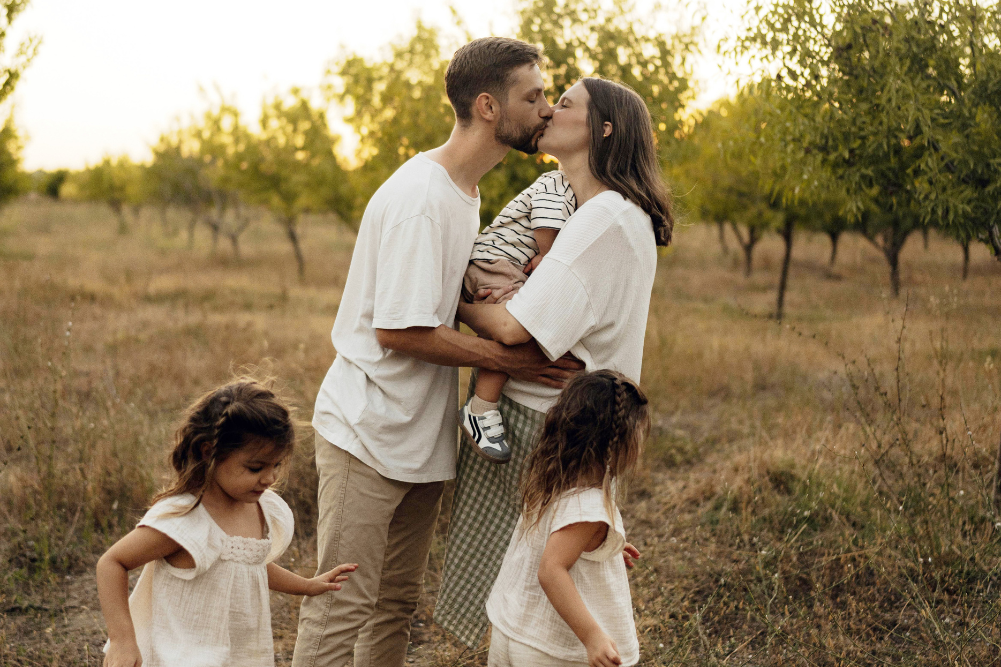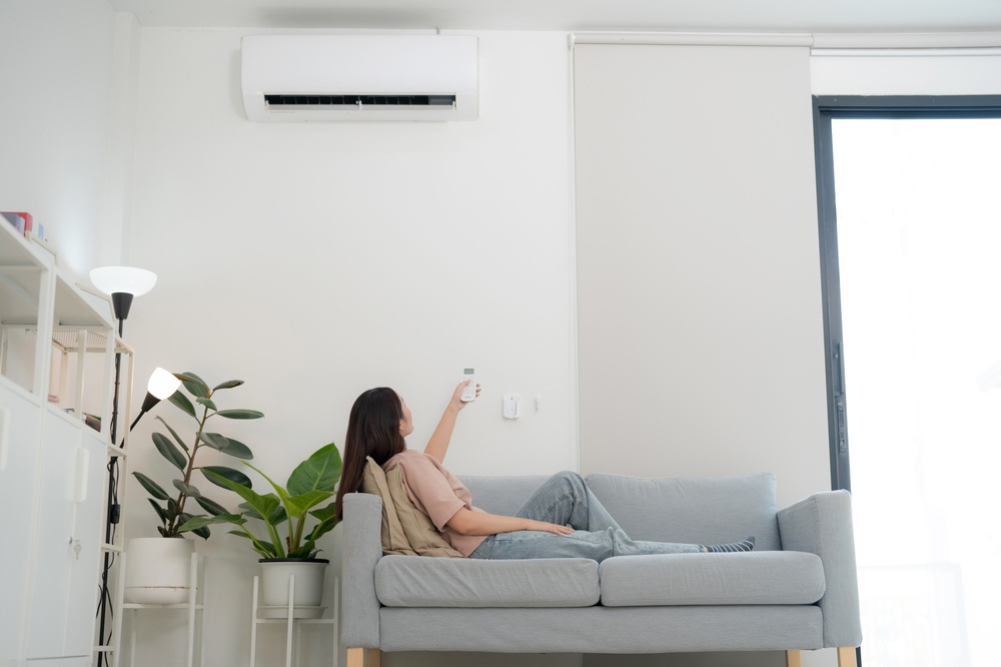The Psychology Of Fashion
There’s something magic about slipping into a piece of clothing that really makes you feel good about yourself. Wearing something you love can invigorate you, making you move differently in the world — standing taller, smiling more brightly, striding with purpose. It can give you an extra glimmer of confidence that others respond to, reinforcing the good feelings.
Think of a soft, perfectly fitted T-shirt that feels like home against your skin. A sharp blazer that you throw on before an important meeting. Those workout tights that make you feel swift and powerful. A splash of yellow that imbues a grey day with sunny feeling.
Fashion is often dismissed as superficial, but there is something deeper to the connection between how we dress and how we feel. In her book The Psychology of Fashion, behavioural psychologist Professor Carolyn Mair writes, “As our second skin, fashion enables us to construct and express our identity … When we try on new clothing, we can see ourselves as a different person and take on a new identity and mood.”
It’s a phenomenon psychologists call “enclothed cognition” — the idea that our clothing choices can impact our mood, self-image and even our performance. This is something Sydney-based image consultant Louise Bernardi sees every day in her work to help people find their authentic style and express themselves through dress.
“Clothing has a powerful effect on how we feel,” she says. “When we look good, we feel good. When we feel good we gain confidence. Confidence unleashes our inner strength and abilities. I truly believe the most important thing when getting dressed is to choose clothes that make us feel great.”
The uplifting power of clothes
For many of us, choosing our clothes each day is an unconscious act. We reach for something familiar and clean and throw it on without much thought. But that quick decision can reveal things about our mood and self-image, and play a role in shaping those feelings for the rest of the day.
“We all have days when we feel uninspired, flat, directionless and missing that spring in our step,” Bernardi says. “Put on something dowdy, dirty and dishevelled and you’ll feel the part. But if you wear your favourite outfit, the results are be amazing. You have more energy, inspiration and the day looks more positive.”
Professor Karen Pine, a developmental psychology researcher at the University of Hertfordshire, has led several studies investigating this link between clothing and mood. In one study of 400 people, she found a strong connection between feeling stressed, anxious or depressed and clothing choices.
“When someone feels like this their world appears to close down,” she writes in her book Mind What You Wear. “Their outlook narrows, the range of things they enjoy shrinks and their interests become more limited. They become less tolerant of anything unfamiliar. It’s hardly surprising then to discover that their wardrobe options also appear to shrink.”
Professor Pine found that women who were feeling unhappy or stressed reported neglecting over 90 per cent of their wardrobe. Specifically, she found they were more likely to choose to wear things that “camouflage” the body, like a baggy top or an old jumper. In contrast, when they were feeling happy and positive they were 10 times more likely to wear a favourite dress, and much more inclined to adorn themselves with jewellery and accessories.
So, what if instead of reinforcing a low mood with clothes, we put on something we associate with cheerfulness and confidence anyway? From her research, Professor Pine concludes that choosing uplifting clothes — well-cut garments that make you feel good, flatter your body and remind you of happy times — could help to boost your mood when you’re feeling down.
“Many of the women in this study felt they could alter their mood by changing what they wore,” she writes. “This demonstrates the psychological power of clothing and how the right choices can influence a person’s happiness.”
Dressed for success
As well as lifting our mood, our clothing choices have the potential to boost our performance, subconsciously nurturing our skills and motivation. “How you dress affects the way you feel and how you perform,” Bernardi says. “Gym clothes put you in the mood to exercise. High heels make you feel glamorous and confident. A suit puts you in business mode, so you think smarter, faster and command more respect.”
Psychological researchers Professors Adam Galinsky and Hajo Adam demonstrated this effect in a 2012 study that coined the term “enclothed cognition”. They asked participants to wear a white coat and perform a task that required sharp attention to detail. When the coat was described to participants as a “doctor’s coat” (a garment symbolically associated with scientific intelligence and focus), they performed notably better than in their own clothes. However, when participants believed the coat to be a “painter’s coat” (associated with creativity and free-flowing imagination), they showed no such improvement on the science-minded task.
The key to this effect seemed to be the combination of two elements — the symbolic meaning of the clothing and the physical experience of wearing it. “Although the saying goes that clothes do not make the man, our results suggest that they do hold a strange power over their wearers,” the researchers concluded.
In Mind What You Wear, Professor Pine describes similar a study, in which she found that wearing a Superman T-shirt boosted students’ impression of themselves, making them feel both more likeable and more powerful. “When asked to estimate how much they could physically lift, those in a Superman T-shirt thought they were stronger than students in a plain T-shirt or in their own clothing,” she writes. “It seems indisputable that putting on a piece of clothing which carries symbolic meaning can change a person’s self-perception and even their thought processes. It can make them feel more or less attractive, confident, powerful or clever.”
The magic of colour
Playing with colour can be an energising way to infuse more happiness into your wardrobe and explore what makes you feel good. “Colour plays an incredible role in how we look and feel,” Bernardi says. “When you’re wearing beautiful colours that look fantastic against your eyes or make your skin glow, it lights you up. People are smiling as soon as you walk into the room. Colour can be used to express emotion; it can be symbolic. Colour can make you feel happy, sad, bright, vibrant. It can project strength, energy, honesty, integrity and trust.”
Research in colour psychology has found that particular colours produce an emotional experience. Colours with longer wavelengths (blazing reds, oranges and yellows) feel warm and stir up passionate feelings, while those with shorter wavelengths (tranquil blues and greens) feel cool and relaxing.
Some researchers have theorised that brightly coloured clothing could therefore boost our mood, while more subdued colours could create a more mellow feeling.
But, good news for those who love all-black everything, that doesn’t mean rainbow colours are always better. In The Psychology of Fashion, Professor Mair notes that any colour can lift our mood, depending on the personal association we have with it and the expectations we have of wearing it. “The symbolic meaning of the clothing could potentially lift mood, but the wearer has to believe in this,” she writes. “Therefore, the mood-enhancing power lies with the wearer, not the clothing or its colour per se.”
For some, that might mean canary yellow, neon pink and brilliant sapphire blue — colours that feel bright and bold. For others, black is glamorous and thrilling, symbolising drama and mystery and sophistication. Soft neutrals like grey marle, ivory and oatmeal might feel dull and expressionless to some, but to others they’re soothing, grounding and elegant. There are no rules; the most important thing is choosing colours that personally light you up and make you feel great.
How to create a feel-good wardrobe
When you open your wardrobe in the morning, how do you feel? If your clothing options aren’t sparking optimism, pleasure and inspiration, it might be time for a wardrobe clean-out. Here, Bernardi shares a few quick tips for building your authentic style identity, clearing out the garments that bring you down and creating a wardrobe that brings you joy.
Get to know yourself
“First, it’s really important to spend time with yourself and know who you are,” Bernardi says. “Start at the beginning: what’s your message? How would you describe yourself? What are your views, your values, your principles, your experiences? By understanding who we are on the inside, we can adapt our dress to express ourselves in an authentic way.”
Discover what clothes you love
Notice what styles, colours and materials make your heart leap when you see them, and collect images for inspiration. “I would start a Pinterest board and look for people whose style you love, so you can start to get ideas,” Bernardi says. “Then you can go back to your wardrobe and put pieces together that build from that.”
Celebrate your unique beauty
When creating your personal style, discovering what really flatters you and celebrates your unique beauty can go a long way to helping you feel confident.
“Get to know what your body shape is and how to complement it with the best lengths, cuts and shapes,” Bernardi advises. “Everybody is beautiful — the idea is to find that beauty and try to magnify it, while downplaying anything you might feel vulnerable about. Then you can get dressed in the morning and have a spring in your step and a smile on your face, because you feel good and have the confidence to express yourself.”
Get playful with colours, textures and accessories
“Learning how to inject colour in your life is so energising, and embracing your unique colour palette will bring your style to a whole new level,” Bernardi says. “An understanding of how to use colour will change the way you shop and dress and give you more control over your visual communication and the message you’re sending.” Along with colour, explore different patterns, prints, textures, materials and accessories — mix it up and discover what feels good to you.
Choose materials that feel good
There’s a physical and sensory element to clothing’s effect on how we feel. We wear materials against our skin and that can have a big impact on our comfort. “We all want to be comfortable — I think that’s key, as much as wearing a smile,” Bernardi says.
Professor Pine’s research suggests that choosing natural fibres like linen, cotton, silk and wool can feel more luxurious, comforting and grounding, partly because they connect us with nature.
Give yourself freedom to move
Similarly, choosing clothes that allow you to move freely can help you feel more comfortable and confident. Think of function as well as style. That might mean choosing something loose and breezy if you’re going on a summer adventure or it might be about feeling supported and streamlined with good quality activewear.
Keep evolving
Bernardi suggests regularly refreshing your wardrobe so you can ensure you have pieces that make you feel good right now. “Sometimes when you reach a new life stage — maybe you become a mother or there’s a change in your career — people can feel a bit lost and think, ‘Who am I now?’” Bernardi says. “You’re a new person every five or 10 years, so it’s natural your style will keep evolving too.”
The changes to your wardrobe don’t have to be dramatic. Simply take a moment to pause in the morning and consciously choose to wear something that lights you up from the inside.








